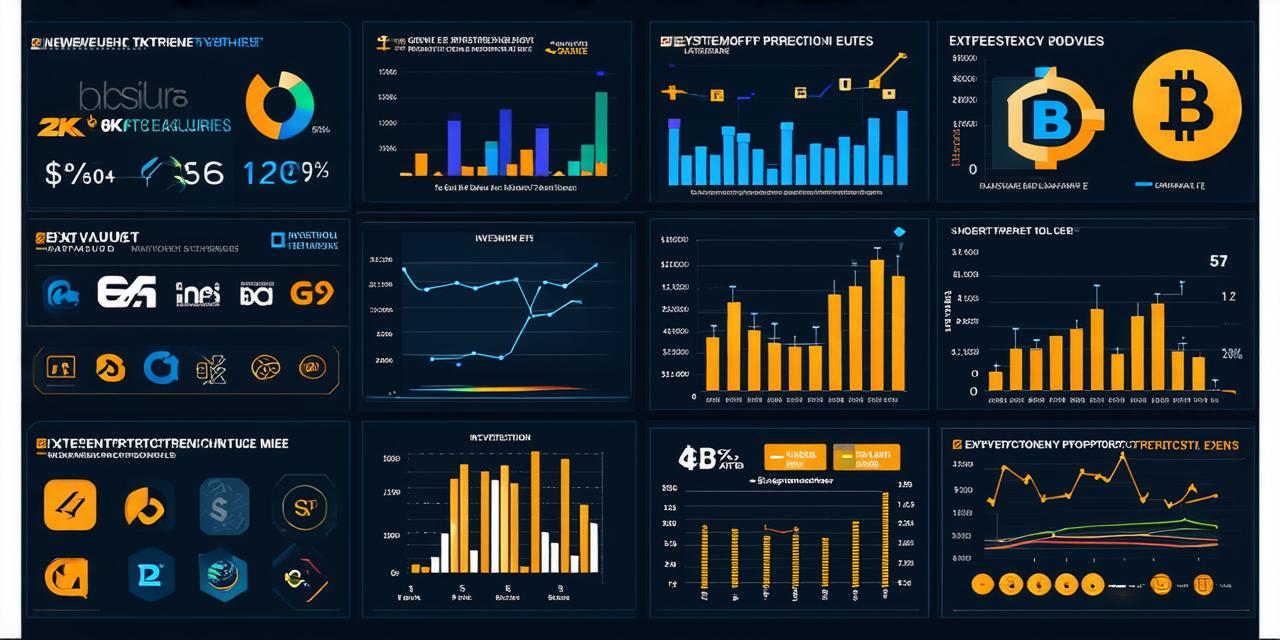1. Market Cap
Market cap is one of the most important factors to consider when trying to predict the future value of a cryptocurrency. Market cap refers to the total value of all coins in circulation. The higher the market cap, the more likely the cryptocurrency is to have a stable value. However, if the market cap is too high, it could indicate that the cryptocurrency is overvalued and may not be able to sustain its current value.
2. Adoption and Use Case
Adoption and use case are also important factors to consider when trying to predict the future value of a cryptocurrency. Cryptocurrencies that have widespread adoption and are being used for real-world applications such as online payments, e-commerce, and remittances are more likely to increase in value. On the other hand, cryptocurrencies with limited adoption or use cases may struggle to maintain their value.
3. Development and Ecosystem
Development and ecosystem are crucial factors when trying to predict the future value of a cryptocurrency. Cryptocurrencies with an active and experienced development team are more likely to have better technology and be able to keep up with changes in the market. A strong and supportive ecosystem, including partnerships with businesses and organizations, can also indicate that the cryptocurrency has potential for growth.
4. Regulation
Regulation is another important factor to consider when trying to predict the future value of a cryptocurrency. Cryptocurrencies that are subject to favorable regulation or have the backing of government institutions may be more likely to increase in value. On the other hand, cryptocurrencies that face harsh regulation or are seen as a threat by governments may struggle to maintain their value.
5. Competition
Competition is also an important factor to consider when trying to predict the future value of a cryptocurrency. Cryptocurrencies that have little competition in their market may be more likely to increase in value. However, if a new and promising cryptocurrency enters the market, it could potentially overshadow the existing one and decrease its value.

6. Technical Analysis
Technical analysis involves analyzing charts and other technical indicators to predict the future price of an asset. While this can be useful in some cases, it should not be relied upon as the sole method for determining the future value of a cryptocurrency. Technical analysis is just one tool that can be used to make informed investment decisions, and it should be combined with other factors such as market cap, adoption, development, regulation, competition, and fundamental analysis.
FAQs:
Q: What are some common mistakes people make when trying to predict the future value of a cryptocurrency?
A: Some common mistakes include relying too heavily on technical analysis, ignoring other factors such as market cap, adoption, development, regulation, competition, and fundamental analysis, and not doing enough research on the specific cryptocurrency in question.
Q: Can past performance be used to predict future value?
A: While past performance can provide some insight into a cryptocurrency’s potential for growth, it is not a reliable indicator of future value. Other factors such as market cap, adoption, development, regulation, competition, and fundamental analysis should also be considered when making investment decisions.
Q: What are some real-life examples of cryptocurrencies that have increased in value?
A: Bitcoin, Ethereum, and Ripple are all examples of cryptocurrencies that have increased in value over time.
